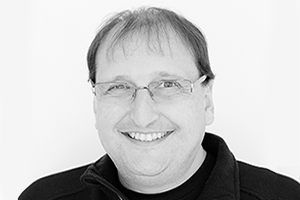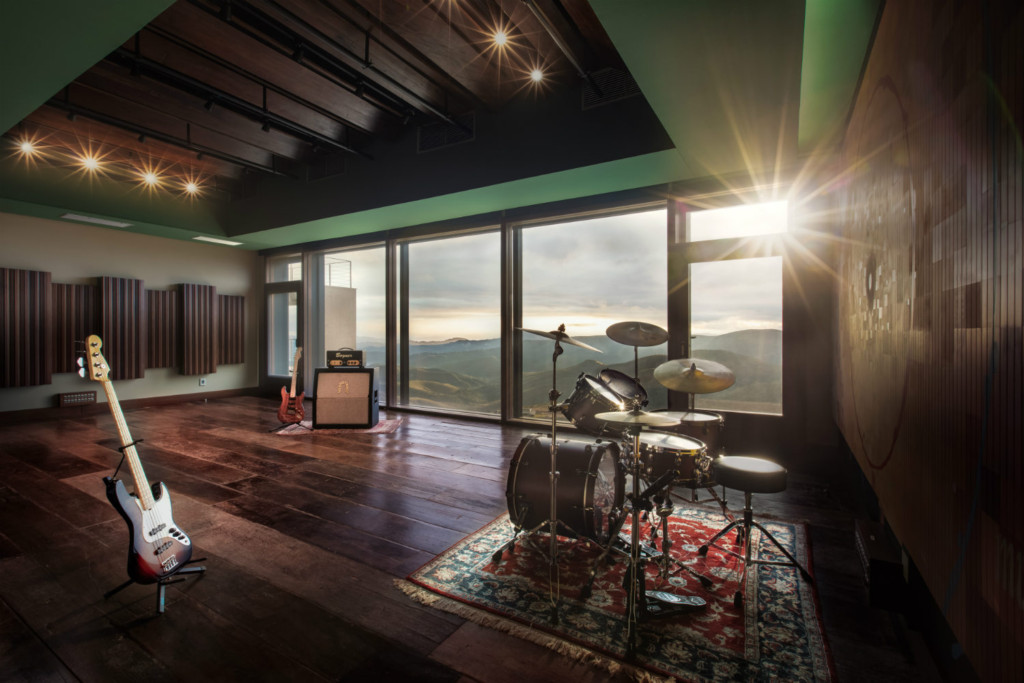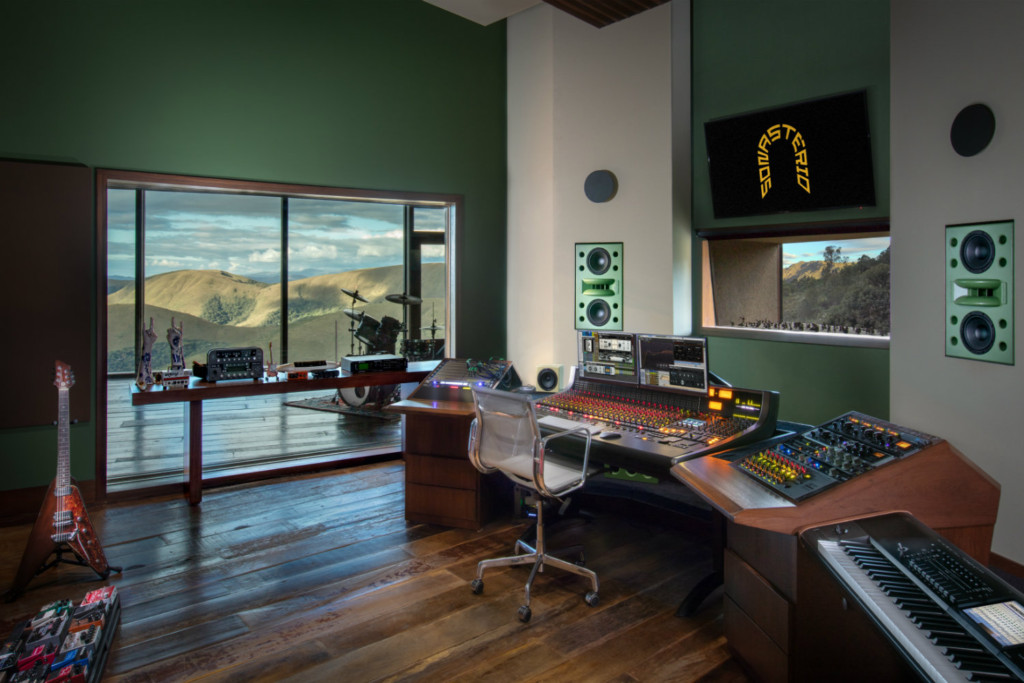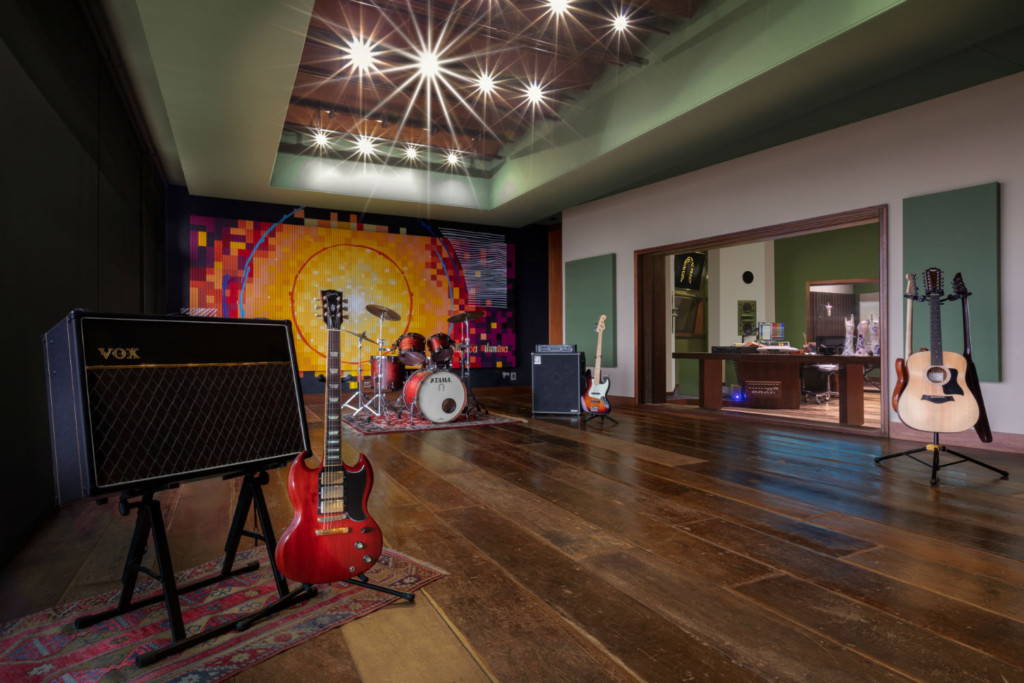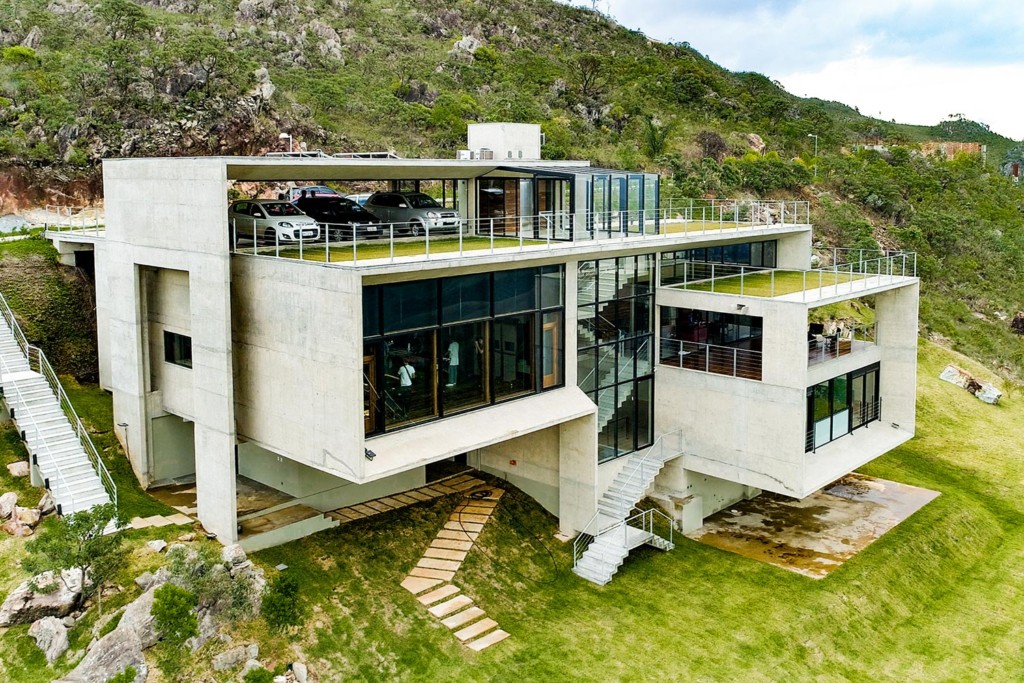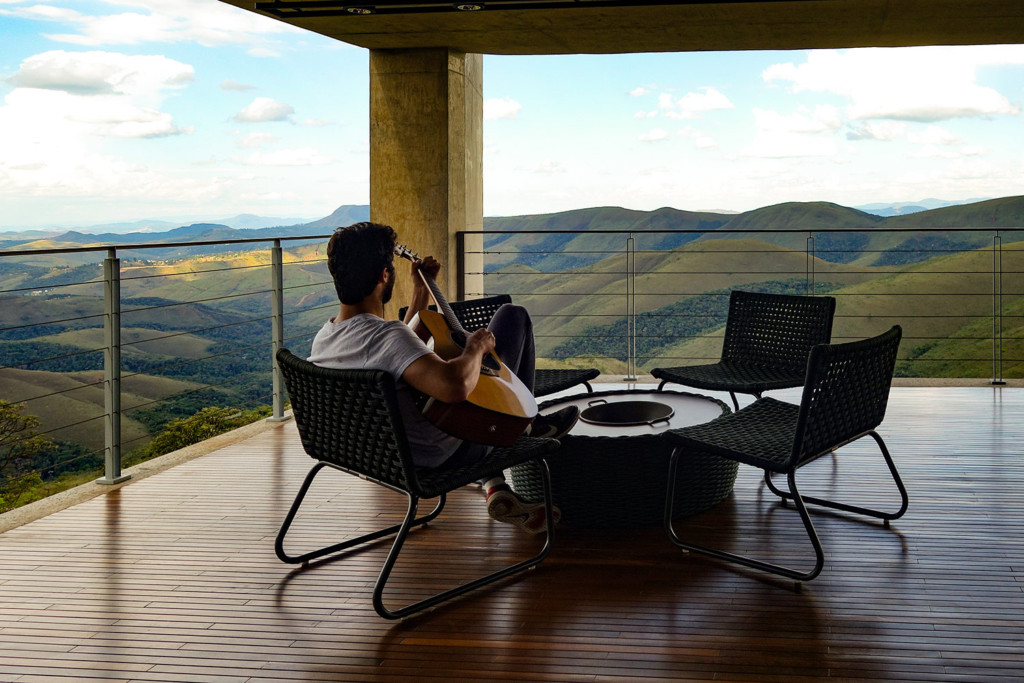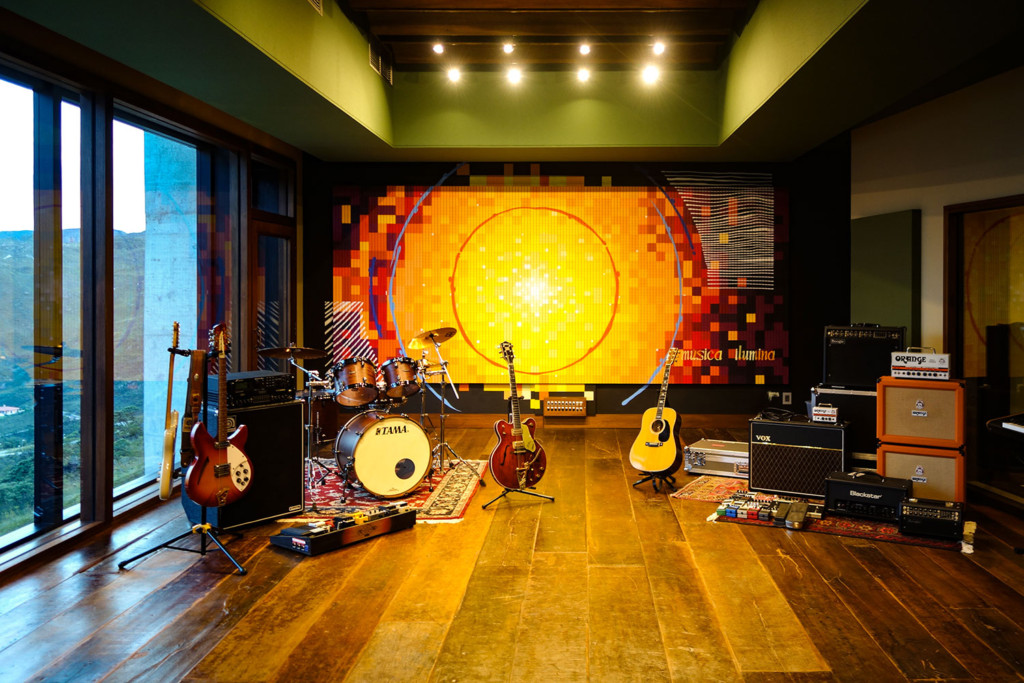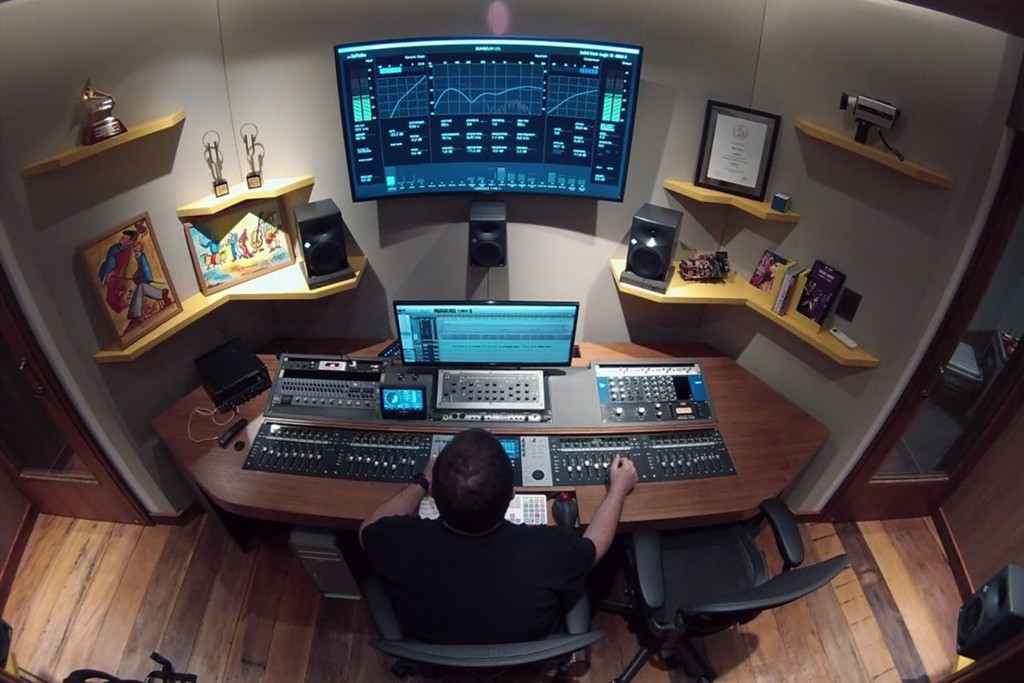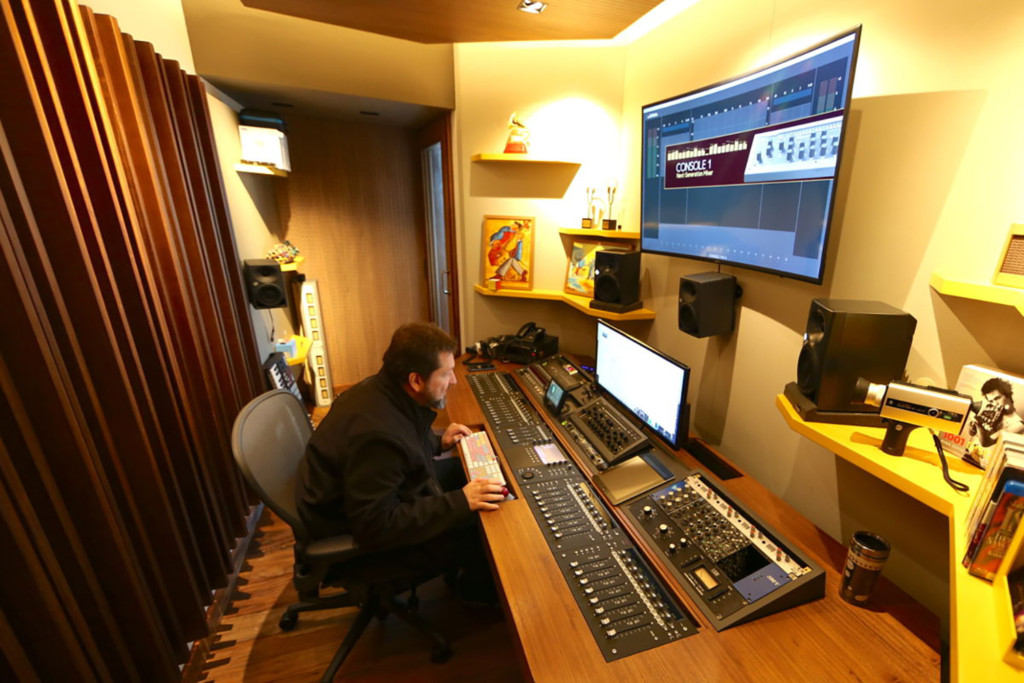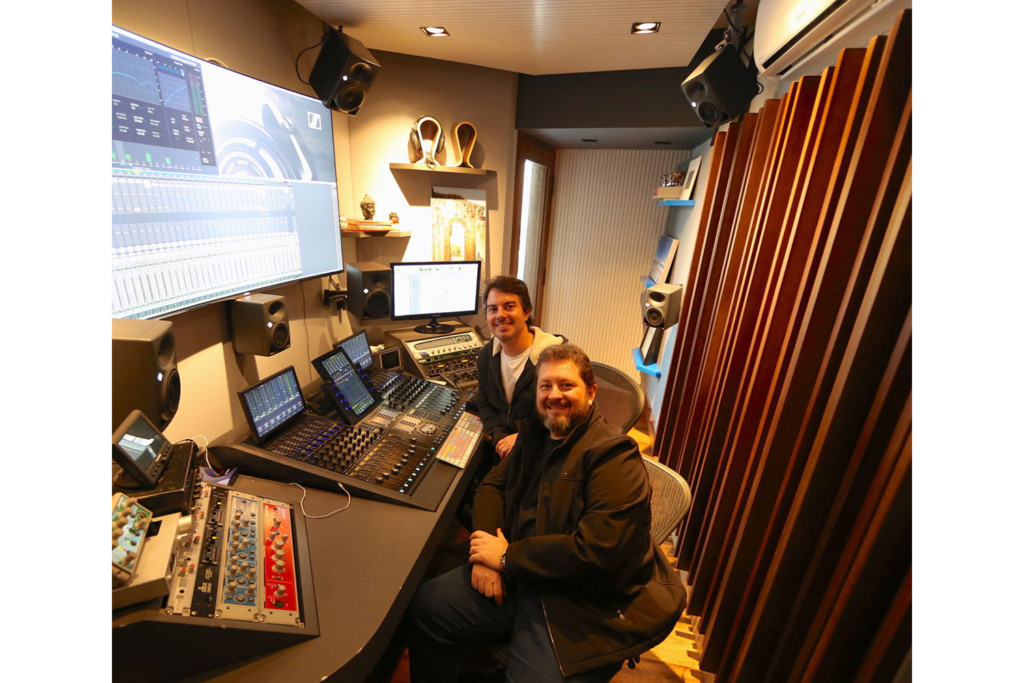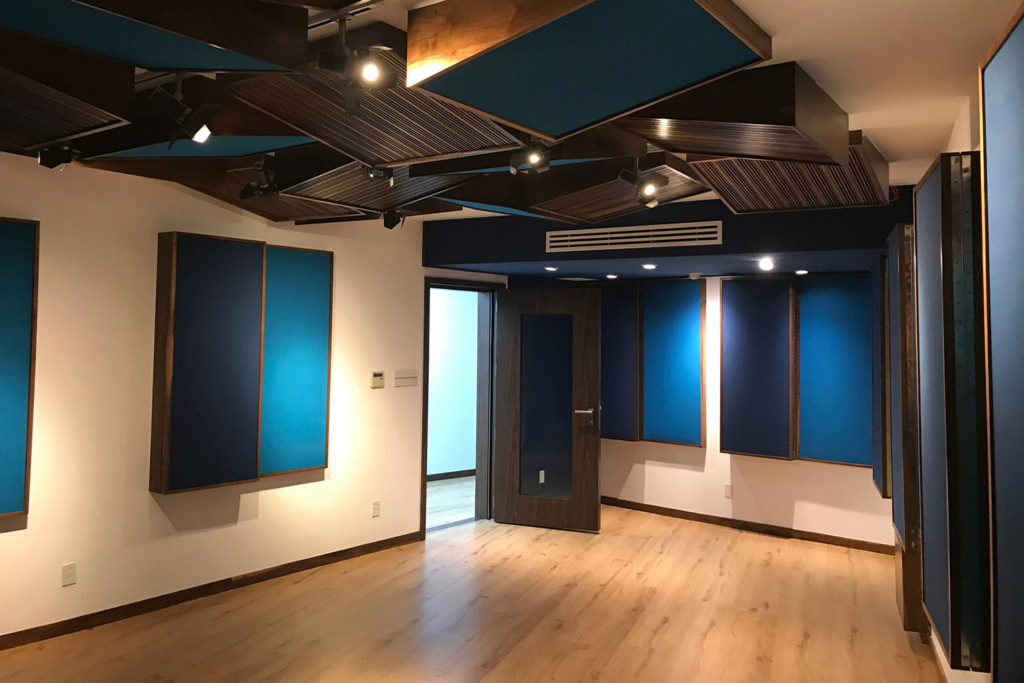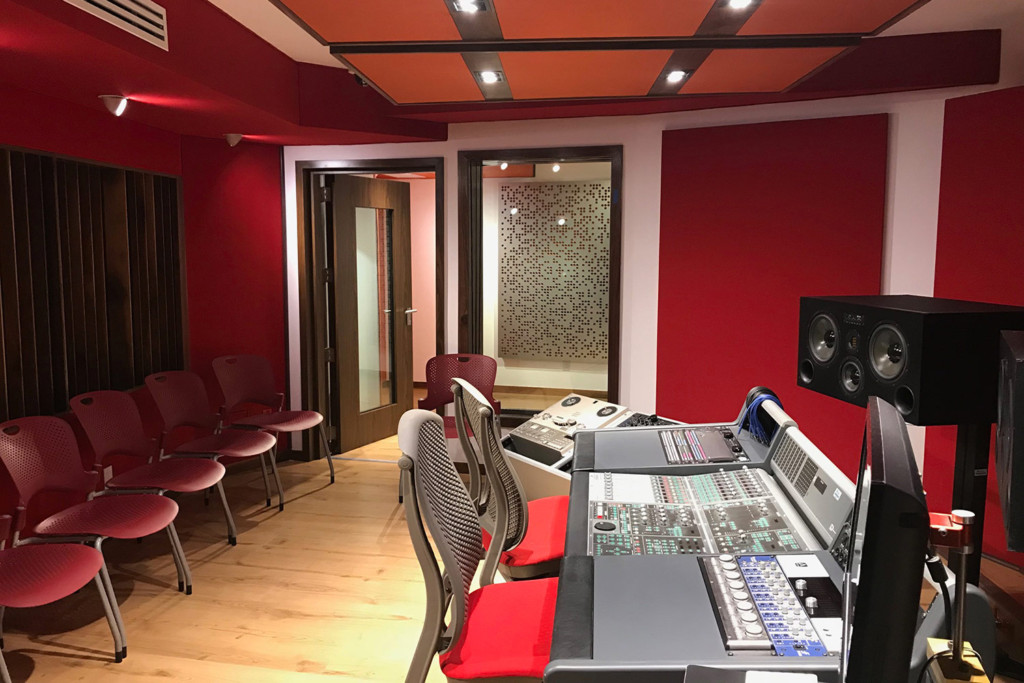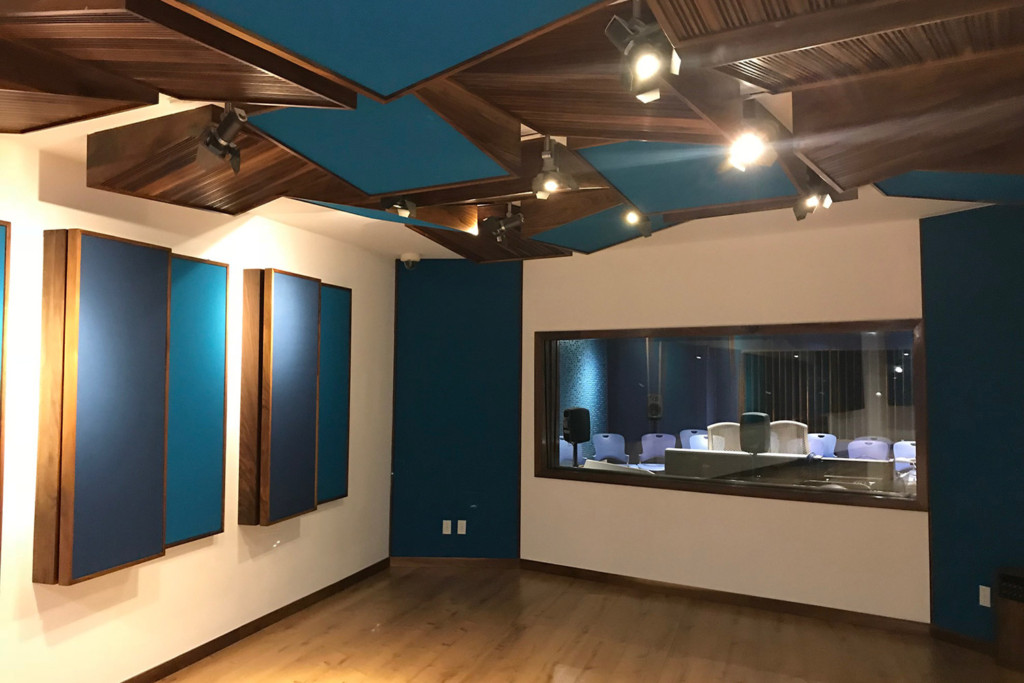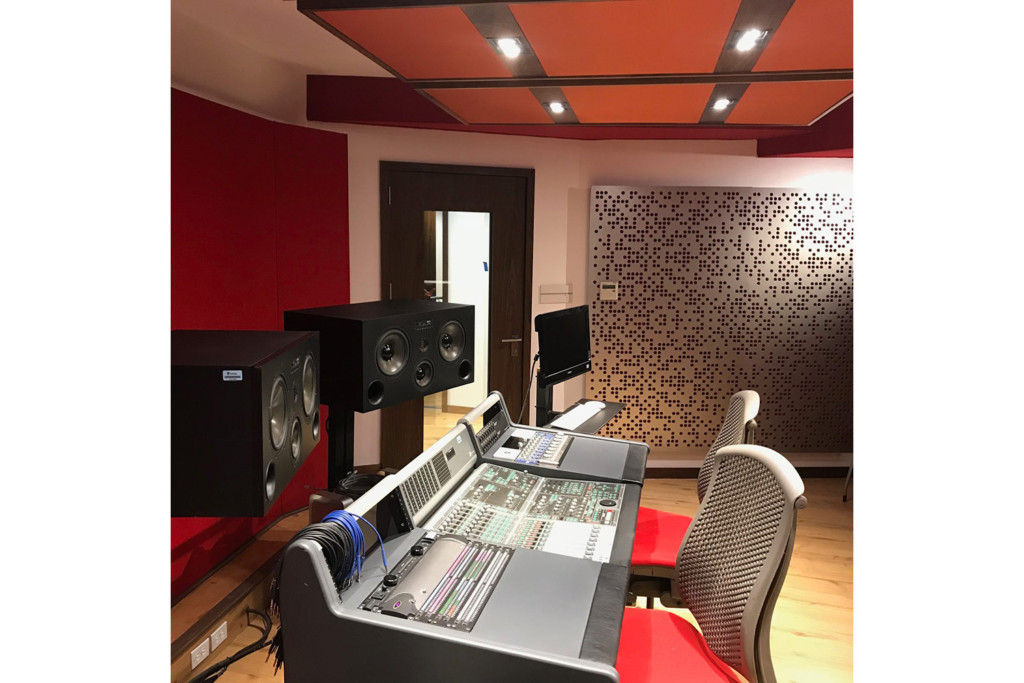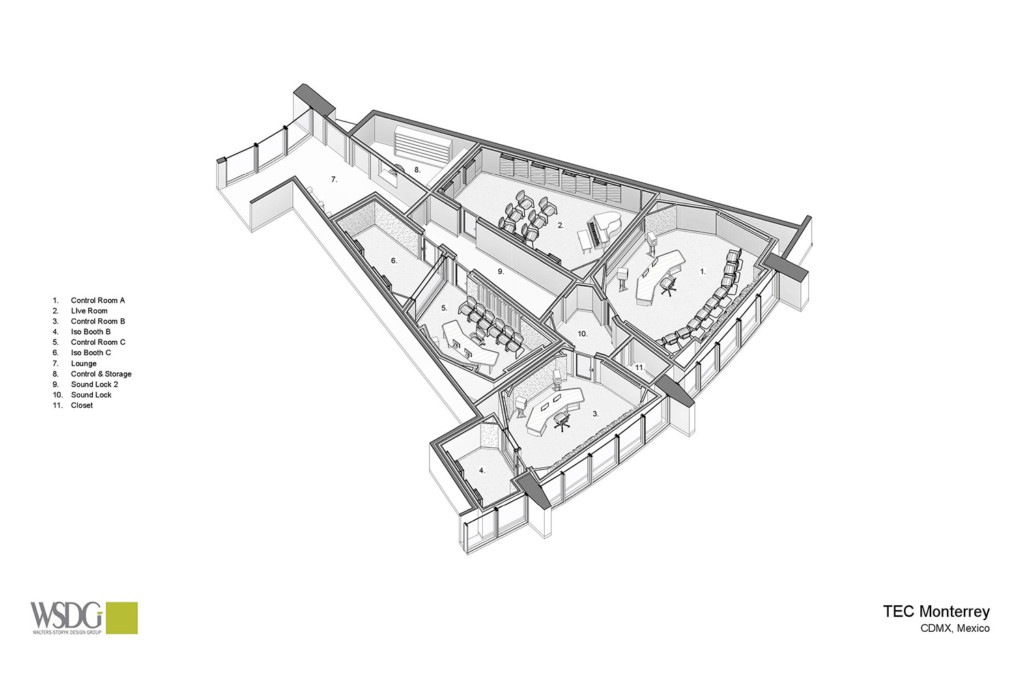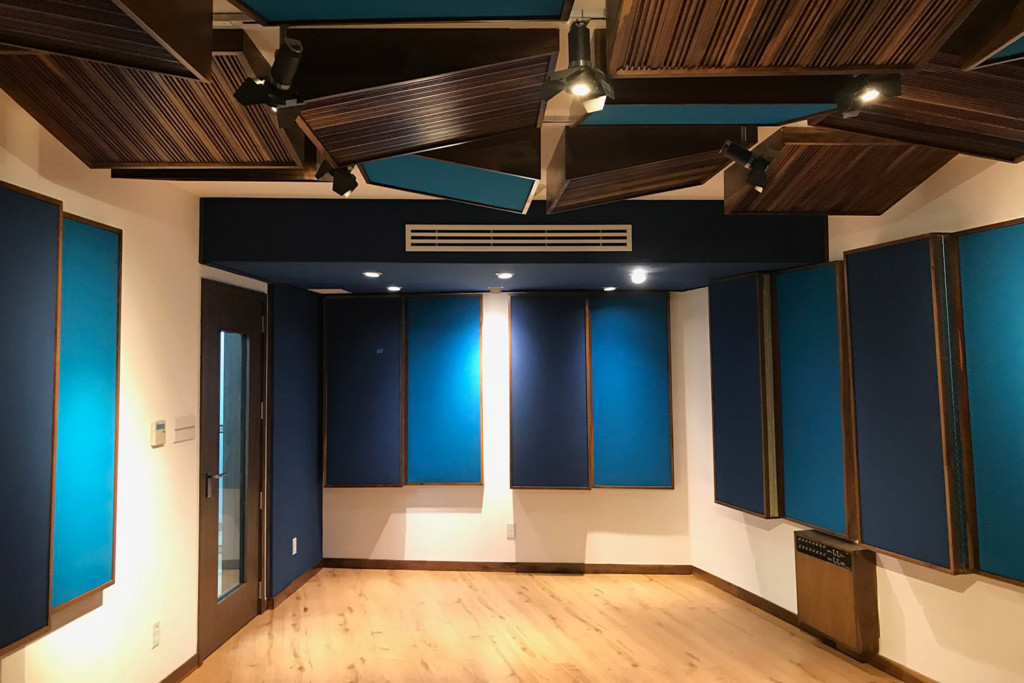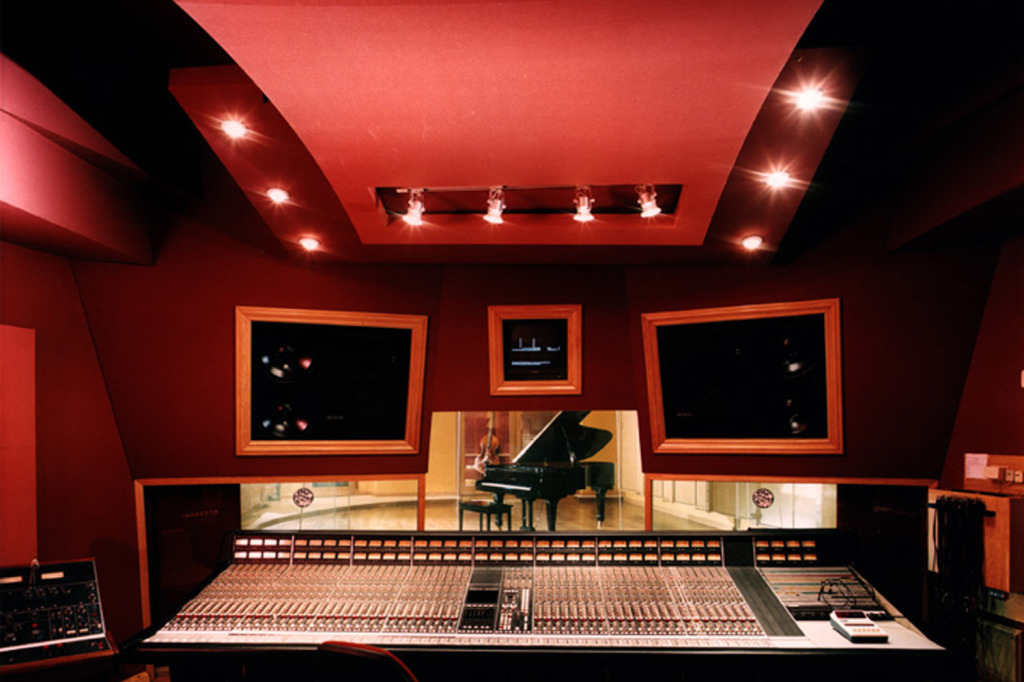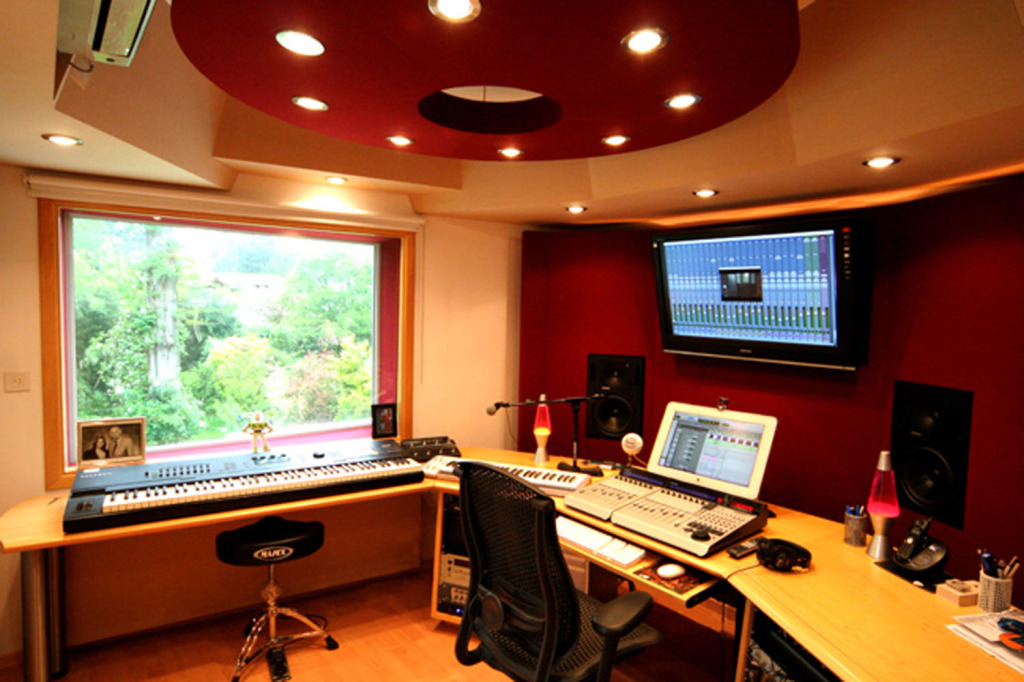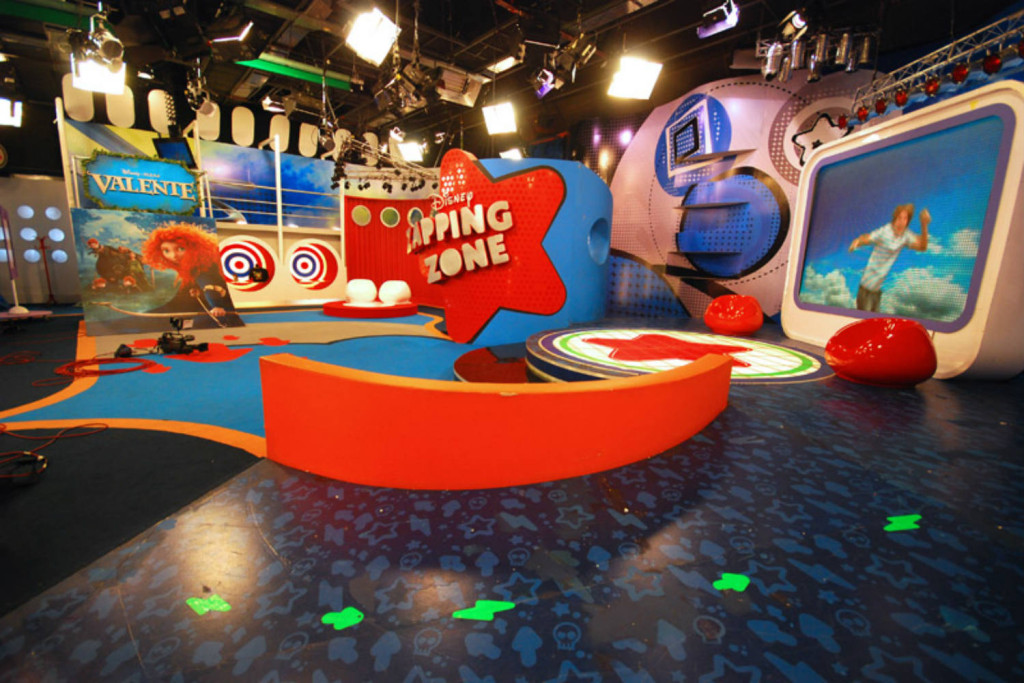
The Director of Business Development and Marketing Manager at WSDG (Walters-Storyk Design Group) told us about his early phase in the music world, how he met John Storyk and the future of the industry.
A: Hello, Sergio! How are you doing?
S: Very well, thanks. Working hard, as always.
A: Well, I would like to ask you about your early stages in the audio field…
S: I’m 52 years old and I’ve been a musician as long as I can remember. My earliest encounters with music were from when I was around 6 years old playing the piano at my grandma’s house. I’m a musician from the outset and self-taught regarding everything else, that is, everything related to music and technology. I was born in Buenos Aires, Argentina, and spent most of my life there. I began with different bands and music styles: Folk, Folk-Pop, then drifted to Pop, later to Funk. I used to have my own band named Cash. We were in the top 40 in Argentina and our album was released by the record label that belonged to Sandro. So, I spent some time with him. It was quite odd since we weren’t a traditional Latin American or Argentinean style band, but rather an African-American band, like Funk and Soul style. However, he was the record label behind us.
Since the beginning of my career as a musician, I’ve always been interested in technology, always wanting to buy new gadgets. Imagine how hard it was to get something like that during the ’80s in Argentina. And above all, it was very difficult to get any information. I remember being on the corner of Corrientes and Florida, at the only newsstand which once every two or three months received one or two MIX magazines. And there I was, waiting for them to arrive. Those were our bibles; I grew up and learned by reading every line and looking at every picture of those magazines.
I participate in several recording studio projects, radio stations, etc., in which I applied my non-formal knowledge about technology, only basing on my experiences. And well, you know, just trying materials, and whatever was available. So, you can imagine the things we built to create acoustic panels. Imagine the crazy things we did.
But it was in 1994 when my life changed. One of my dearest friends, Chris “Fingers” Adams, organized with me The First Annual South American Pro Audio Expo. I think it was in May and all the big professional audio brands and local distributors met at the Costa Salguero convention centre in Argentina. It was the first one in the country and one of the first Audio Pro meetings in Latin America. John Storyk and Beth Walters were among those who were going to make a presentation at the Expo, and we had the following problem: the organization was supposed to bring a television and speakers, because they had prepared an audio-visual presentation, but the rental company never brought them. Since I was very close to Chris, who was really busy with the whole organization, he asked if we could handle the issue. So, my wife Silvia went home, picked both our tv and audio equipment from our bedroom and the problem was fixed. John and Beth asked which the issue was and how was it solved. That’s when we met and when they found out that the whole equipment came from our home. They were surprised, they couldn’t believe it. The word of English origin, is serendipity, related to destiny, means something like “when people meet each other” or “when stars line up”, it is a serendipitous moment and that was the first…
The second serendipitous moment was that same night, a few hours later. John would perform the event’s main presentation since he was going to display an Acoustic Master Class. The room was full, with about three hundred people. Also, simultaneous interpretation was going to be provided, for which an interpreter was hired. John is a typical New Yorker and he speaks very quickly. Besides, the difficulty of acoustic and architectural terminology made the task even harder. He started talking and I could understand him, but most people were waiting for the translation. Suddenly, the interpreter stopped talking and left! She apologized for not being able to continue and abandoned the room. My friend Chris, the event organizer, went up on stage and asked for someone who could speak English because he had to go somewhere else, he looked at me and asked me to come up. In those days I wasn’t familiar with architectural terminology, I just knew a little about acoustic terminology. Then I walked to the stage, sat next to John and he said, “you again? Are you going to save the day again?” to which I replied, “Just warming up, we are Argentinians.” I told him that I couldn’t translate his words simultaneously, but if he would speak more slowly, I could translate it consecutively. There was an instant magnetic attraction between us, and we even started making jokes together. In the end, it all turned out fantastic. The talk, that was supposed to last an hour, lasted three and a half hours. People connected a lot with us, asked questions and one could sense the positive reaction from viewers and from John too, who witnessed how involved the audience was. This, as well as the general knowledge that the audience showed, left him very surprised.
At the end of the day, we ended up having a barbecue in Costanera (typical Argentine meeting place), and he asked what I did for a living. I began to tell him that I was a musician and that I had my own recording studio, that actually was a home studio. I mentioned that we were about to move since my wife and I had bought our home, in which we were going to build my recording studio. He asked me to show him the studio drawings and I started sketching on a napkin. The next day, I showed him the real designs, and here comes the third serendipitous moment. I explained to him the different problems, what we wanted to do, etc., and he immediately said that he would like to design my studio. I thanked him for his offer, but I couldn’t afford it, it was out of my league. He replied that if I built what he designed; it would be for free. So, I talked to my wife and told her that I didn’t know how much it would cost, but that it would be the very first one in Argentina since WSDG at the time wasn’t global, and that we were looking at a great opportunity. Then, on the third day, I told him that I agreed, that he would design it and we would build it. And that’s where it all started. We are connected from that moment as brothers, and Silvia with Beth Walters, as sisters.
The fourth serendipitous moment was on July 27 of the same year, my birthday. John sent me the design plans by FedEx since at that time there was no internet or digital transfer technologies. And on that very day, John also sent me a fax offering me the position of WSDG representative in Argentina. I called him on the phone and told him that he had just given me the best birthday present I could have and that this was something that would change my life. He was absolutely silent, to the point where I thought I had lost communication or said something wrong. I asked him if he was there if he was listening to me, and I heard him swallow. He replied that it was incredible, that July 27 was also his brother’s birthday, who had passed away a few years ago. As you can see, my story with the WSDG family is very interesting. This was meant to be. The story was already written.
So, from that moment I started to provide WSDG services to Argentina. Since the first studio was mine, the second studio was then built, the Sound Designer, a Mastering studio for Mario Breuer, which was set up inside El Pie Records. Then we designed Sound Rec, Circo Beat and studios for Palito Ortega, Los Auténticos Decadentes, Los Fabulosos Cadillacs and others. Later, we continued in Chile, South America and after that in Latin America. Then I became CEO of what we call WSDG Latin and afterward, Director of Global Business Development and Marketing Manager. Now I live in Miami, where the Latin America office is, and from here, I’m in charge of business development for the entire organization
I would like to add that, for me, Mario Breuer was also a very important person in my career as a musician and engineer. Moreover, his studio was the first one that we designed in Argentina. Mario is a close friend who, throughout my phase as a musician, also recorded some of my music in Panda and in my own studio. A special mention for Mario, who is the godfather of professional audio in Argentina.
SONASTERIO STUDIOS – BELO HORIZONTE, BRAZIL
A: After the company’s last projects in Latin America such as Mix2Go and Sonasterio, which is the next project in the region?
S: The next thing the community is going to hear about is three large educational projects. We just finished three studios in the Mexico City campus for the Monterrey TEC that were destroyed by the 2017 earthquake and now are relocated and in operating conditions. We are also working on large projects in Colombia, one in Cali for ICESI University. It is a complete four-story building with 32 acoustic spaces, for research, individual practice rooms, ensembles, and 3 large recording studios. The other is in the design process and is a large Music Box building for the Universidad de Los Andes in Bogotá.
MIX2GO – SAO PAULO, BRAZIL
We recently completed two major commercial studios, one in Miami called Alacran Records, and another in Jamaica, in Montego Bay, called Rum Punch. Both belong to a new record label, a new business model.
I am noticing that Latin America’s industry, although it faces many challenges regarding business development and the monetization of music and content, keeps growing. Investments in education are increasing, which is positive since one day those students will become professionals and cultivated people. This could only improve the industry. So, I would say that there’s more work than ever. If anyone asks me if the industry is sinking, I’d say it’s expanding wildly. What’s changing is how musicians and professionals are being paid. Music reached the entertainment industry, which is expanding in leaps and bounds; especially fields such as video games, e-Sports and podcasts, webcasts and everything related to non-traditional forms of transmission, that we foreshadowed as emerging and now are completely solid. In 2018 we finished the new studios for Audible, an Amazon audiobook company, Stitcher and Gimlet. Three of the world’s largest webcast, podcast and audiobook companies are expanding their operations and if there is a market for that in the USA, there will surely be a Spanish speaking market for Latin America. We anticipate that this market will definitely grow in Spanish and other languages such as French, German, etc. So, I can certainly see that the industry’s flourishing will continue and that those growths will require professionally constructed acoustic installations, insulation, systems integration, audio engineers, assistants, talent, music, content. This means that not only am I not negative about the future, but I am completely optimistic, as these ongoing improvements will require what we as engineers and artists can offer.
And I know, as an Argentinian who’s aware of Argentina’s and Latin America’s situation, which is more or less the same, that while we stand daily under this dark cloud, it is really hard to see things this way. On the bright side, our countries have a great deal of talent to offer. To understand the path we need to follow to achieve success and to recognize all the challenges, that’s the right energy.
TEC DE MONTERREY – MEXICO CITY, MEXICO
A: A very encouraging and promising perspective… Regarding market growth, is the company thinking of opening new offices in Latin America?
S: We’re always looking for representatives. Someone who we can identify in the local market, who can reach our goals and connect us with people. Someone who would engage in dialogue for new projects. There are three active representatives working for us in Colombia, seven people working in Jamaica and six people in Mexico. Although we don’t have offices, as they produce expenses that don’t benefit anyone, we have a lot of talented people working with us, who are part of our ever-growing network. We manage projects in every country in the world, but we only have four main offices and seven representative offices. For example, we have one in China, but China is huge and the representative lives in just one place. However, we are involved in many business relationships with different people around the country. In Europe, we have an office in Barcelona, one in Basel and one in Berlin, but we don’t have an office in London, which is crazy. But we have a team and colleagues there. It’s a very flexible network, which allows us to reach our customers’ needs. We work virtually every day with the whole team around the world.
A: Being a large network, how does the workflow function in the company?
S: The first thing we’re doing is trying to be as visible as we can. We try to connect with specialized media related to the newest industry and other fields. We not only provide for the recording industry, but we also build theatres, workspaces, stadiums, arenas, residences, among other projects. That’s why we try to be as visible as possible to our potential audience, hoping that if someone is looking for professional advice in the field of acoustics and systems integration, which is what we do, at least we are among the five possible candidates that people might consider. Sometimes the calls reach one of our representatives or one of our different offices, depending on the location of the project. Other times we are contacted by the email of one of our leaders or via info@wsdg.com, which is the most common way to contact us. From that moment, I take responsibility for the contact, analyze the prospect’s needs, identify the project’s potential and that’s where it starts. Then follows the process we call prospect review, which basically analyses what the project needs, the budget, assesses everything related to it until we are ready to make a formal design proposal.
Once everything is designed, everything in detail, the acoustic and architectural aspects, the systems integration, the electrical components, etc., we are able to say that the design phase has concluded and the construction phase begins, which is totally related to the location of the project because we are not builders. WSDG doesn’t build. Normally the builders are local companies, which can provide the service of building specialized sectors. Most of the time we have to do a lot of educational work with local builders to achieve the quality standards we require. At that point we’re standing next to the customer, making sure the builder does exactly what we’ve designed, carrying out quality controls.
At the end of the construction process, when everything is already built and perfectly installed, comes tuning the audio-visual system, acoustic measurement, and site certification. That’s where the project ends. And the MUSIC begins!
CIRCO BEAT / ALEJANDRO LERNER / NON-STOP – BUENOS AIRES, ARG
A: How do you see the company in ten years?
S: Once a year, WSDG has a global meeting and the company leaders meet. This year it will be in Miami and basically what we do is do a review of what we’ve been doing and, most importantly, we dream about the future. This year is very important to us because the company celebrates the 50th anniversary of WSDG and John Storyk’s career. In 1969 John designed Electric Lady for Jimi Hendrix, so this year we will be celebrating fifty years of his and WSDG’s career, as well as celebrating the next fifty years to come, dreaming and designing the next fifty years, with new leadership and new CEOs globally.
What we see in the future is that more and more people are focused on their mobile phones and the entertainment industry will come to balance this. So, on the one hand, we have an individualistic, autonomous and selfish life, and on the other hand, the only thing that can save us from that, is the motivation to be together, have fun, party, listen to music and do all those kinds of activities that make us human. Reinforcing the idea that we are not machines connected to a network. So, what we do is totally connected to spaces, to audio-visual experiences of all kinds, whether mono, stereo, enveloping, immersive, 3D and whatever comes along. Everything is transferred to technology and I can see our company expanding into new fields, into new human entertainment activities, which we are beginning to spot now, but that will make us expand, such as holographic designs, 4D experiences, immersive experiences, human exploration of space and how we will relate to that. If we have to dream, we’ll do it big. What we see is expansion and for us, the only way to continue that expansion is to do a lot of research. Last year we hired Peter D’Antonio, who was the head of RPG, one of the world’s largest acoustic manufacturers, to lead our research and development department. The only way to get to the next level is to become truly intelligent, educate ourselves and learn. We learn from each project, from the clients, their visions, their approaches to projects and also from the research we do to test what we design. Each project we design is a testing ground for our new approaches, getting closer to our goals and reaching the highest levels. That is the spirit of the company, John’s legacy, for each of us, as mentors, just as he is for us and we will continue that with all our energy. We are absolutely convinced that this is the key to success. We cannot be doing what we do, global expansion in our projects, if excellence wasn’t our main goal. That’s what we do every day, being the best among the best in every field we work. That’s our mission as a company.
A: Last question, Sergio. Do you have a favorite project in which you have participated?
S: Our favorite project is the one we’re doing now because it’s the one that’s changing the world for us today. The one in which we are innovating, bringing new ideas, receiving new perspectives. Customers are very important to us because we are translating their visions, their needs, and their objectives into one concept, technically speaking. So, what we’re doing today, for sure, is the most exciting for us. Of course, we love our hits, but if we ask Paul McCartney the same question, he’ll probably say he loves the song he’s writing now, but that doesn’t mean he’s forgotten Yesterday, The Long and The Winding Road, or whatever. We know our hits, from Electric Lady to Synchro Sound, from Time Machine to Circo Beat, from Berklee College of Music to Vienna Symphonic Library Studio, they are all our babies, and we love them all, but the one we are doing today is the one that surprises us the most.

